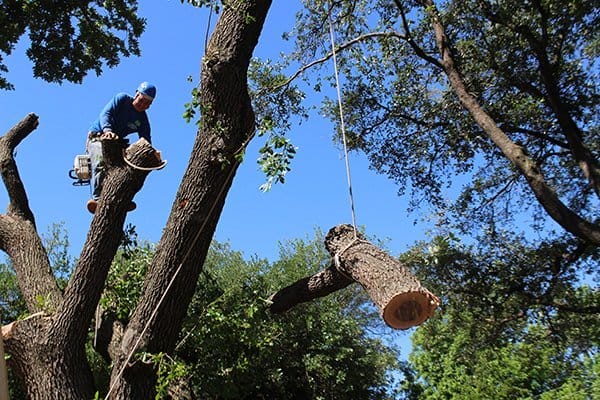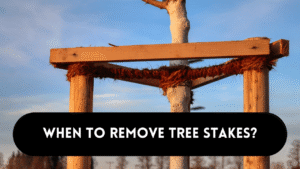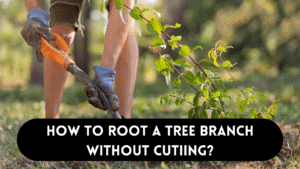For homeowners and property managers, removing a palm tree can be a necessary but difficult task. When dealing with a diseased or undesired palm tree, it’s critical to approach the removal process with caution and safety in mind. Palm trees can be surprisingly heavy and towering, making removal a potentially dangerous task. This article will walk you through the process of safely and effectively removing a palm tree from your property.
Before beginning this project, it is critical to understand the tools, equipment, and safety precautions that are required for palm tree removal. Furthermore, examining the tree’s size and location, as well as local rules, will assist you in efficiently planning the removal operation.
Reasons Why We Should Cut Down Trees
Tree removal, often known as deforestation, is a technique that must be carried out with extreme caution and responsibility. There are valid reasons for removing trees, such as safety problems caused by damaged or diseased trees, the necessity for pest control to avoid disease spread, and the need to make room for building and development projects.
Trees in urban areas may be removed if they hinder views or interfere with structures. Other viable reasons include cutting congested woods, maintaining tree health, managing invasive species, and collecting trees for resources. Trees may also be cleared for agricultural and pasture area in agriculture.
However, reasonable practices are required, stressing replanting, sustainable forestry, and environmental restrictions to reduce environmental impact and ensure the long-term health of the environment.
Removing a palm tree is a significant undertaking, and it’s important to approach it methodically and safely. Below is a detailed step-by-step guide on how to remove a palm tree:
Tools and Safety Gear:
Before you start, ensure you have the following tools and safety gear:
- Chainsaw: For cutting the tree.
- Handsaw: For smaller branches.
- Pruning Shears: For removing smaller fronds and branches.
- Shovel: For digging around the base.
- Pickaxe or Mattock: For digging around the roots.
- Rope and Pulleys: For controlled falling, if necessary.
- Stump Grinder: For removing the stump (optional).
- Safety Gear: Wear safety glasses, gloves, a hard hat, and sturdy work boots.
Step-by-Step Guide to Remove Palm Tree
Assesment
Begin by assessing the tree’s size, condition, and position. Determine whether the tree should be removed or it can be felled safely in its current location.
Obtain Necessary Permits:
Check with your town local authorities to determine if you need any permits for tree removal. Regulations may differ based on where you live.
Clear the zone:
Remove any impediments, furniture, or constructions from the area surrounding the palm tree. To guarantee safety, establish a clear work zone.
Trim the Fronds:
Begin by removing the smaller fronds (leaves) from the tree with pruning shears. Begin at the bottom and work your way up, using caution because the fronds can be heavy.
Trim the larger fronds:
Use chainsaw to remove larger fronds. Begin with the lowest fronds and work your way up,taking care not to allow fronds fall unexpectedly
Remove dead fronds and flowering stalks:
Cut away any dead fronds and flowering stalks if present
Dig around the base
Begin digging a trench around a base of the palm tree,expose the roots and create space to cut down tree. Use the shovel,pickaxe or mattock for this
Cut down a trunk
- Determine Falling Direction: Determine the direction you want the palm tree to fall. If it is naturally going in one direction, it is better to fall it in that direction.
- Cut a Notch: With the chainsaw, cut a notch on the side of the tree that will fall in the chosen direction. The notch should be created about one-third of the way through the trunk and at a 70-degree angle.
- Make the Felling Cut: Make a horizontal cut just above the bottom of the notch on the opposite side of the tree. This will form a hinge that will direct the tree’s descent.
- Retreat Safely: After making the felling cut, retreat to a safe distance.
Remove the Stump:
After the tree has died, you can use a stump grinder to remove the remaining stump. Some people choose to keep the stump in place, therefore this is optional.
Clean-up:
Remove any debris and properly remove of it. If needed, fill in the hole left by the stump with soil or transplant it with another tree.
Professional Help
Hiring a professional tree service for palm tree needs is a wise decision that will assure safety and efficiency. Begin by conducting research on local businesses, checking qualifications, and collecting numerous quotations.
Prioritize palm tree removal experience, inspect their equipment and safety policies, and obtain a formal contract outlining the scope of service, cost, and timetable. Discuss debris removal, confirm local rules compliance, and obtain references. Examine the job location, comprehend payment terms, and review insurance coverage.
You may choose a trustworthy tree service that not only fits your demands but also protects your property and the surrounding environment during palm tree removal by following these procedures and exercising due diligence.Upto 30 feet tall tree removal costs 150$-450$ and 60-80 feet costs 400$-1,000$.
How to Prevent Regrowth of Palm Tree?
A few steps must be taken to stop palm tree regrowth after removal. First, ensure total stump removal by grinding or using a chemical stump remover. Apply a broad-spectrum herbicide to the exposed area right away to destroy any lingering roots. Cut new shoots and fronds as they appear for consistent regeneration.
Alternatively, you can use solarization to kill remaining roots by covering the stump and surrounding area with a black plastic sheet. Applying rock salt to the area can also help to keep growth at bay.
Maintain vigilance by keeping an eye out for regrowth and swiftly eliminating any shoots that appear. Do regular maintenance to keep the area clean of weed and debris is essential to prevent new shoots establishing
FAQs
Can I remove a palm tree myself, or should I hire a professional?
Removing a palm tree can be a challenging and potentially hazardous task, especially if the tree is large or near structures. It’s generally safer to hire a professional tree removal service, but if you have the necessary skills and equipment, you can do it yourself by following safety guidelines.
What safety precautions should I take when removing a palm tree?
Safety is paramount when removing a palm tree. Always wear appropriate safety gear, clear the area of obstacles, and keep bystanders at a safe distance. Follow proper cutting techniques, and if the tree is large or poses risks, consider hiring a professional.
Can I replant a new tree in the same spot after removing a palm tree?
Yes, you can replant a new tree in the same spot once the palm tree is removed, provided the soil is suitable and there are no restrictions or regulations preventing it. Select a tree species that is well-suited to your climate and location.
How long does it take to remove a palm tree, and what is the cost involved?
The time and cost of removing palm tree can vary significantly depending on factors like the tree’s size, location, and any complications. Upto 30 feet tall tree removal costs 150$-450$ and 60-80 feet costs 400$-1,000$.
Conclusion
Remove palm tree is a difficult process that necessitates careful preparation and precautions. First, evaluate the tree and secure the proper permits. Use the necessary tools, such as chainsaws, shears, and safety equipment.
Trim the fronds and make a notch to direct the tree’s fall direction. After felling, remove the stump and properly dispose of the debris. To prevent regrowth, remove the stump, use pesticides, or consider solarization. Maintenance and monitoring are required on a regular basis. When in doubt, seek the advice of an expert to ensure your safety and success.




